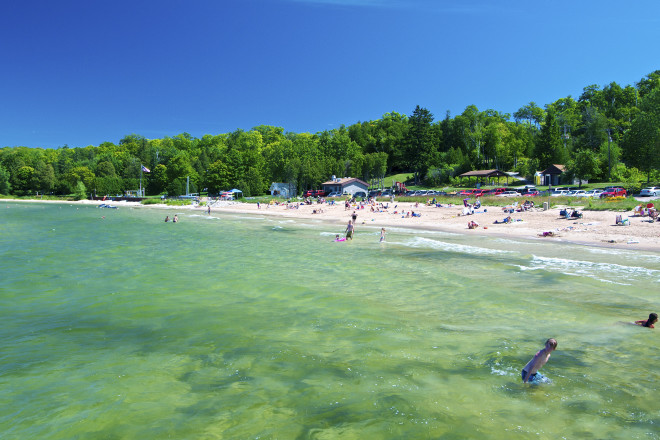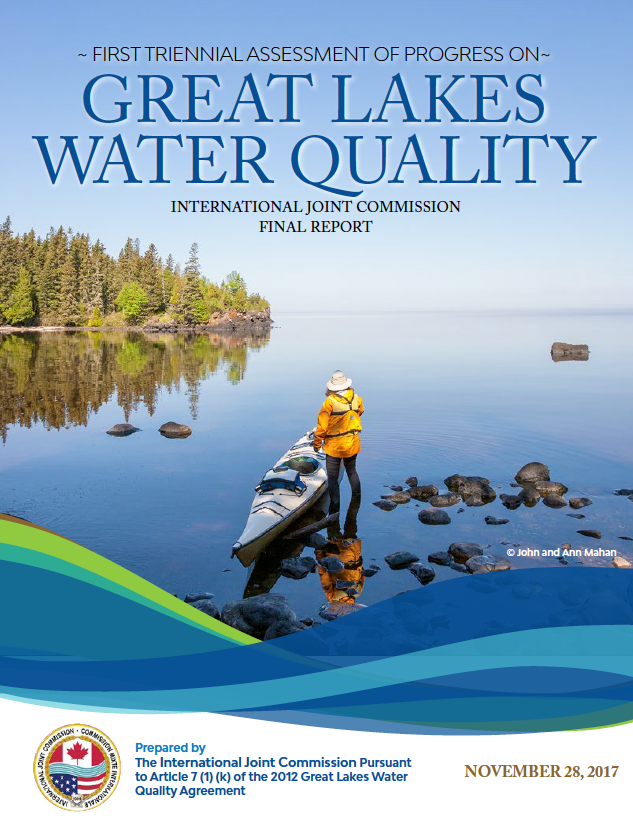Commission Faults Governments for Problems in Great Lakes
- Share
- Tweet
- Pin
- Share

 The governments of Canada and the United States are failing to keep the Great Lakes healthy, according to a new report from the International Joint Commission (IJC).
The governments of Canada and the United States are failing to keep the Great Lakes healthy, according to a new report from the International Joint Commission (IJC).
The report, released last week by the joint Canadian-American organization created by the Boundary Waters Treaty of 1909, highlighted some of the major challenges to the Great Lakes. It called for Ohio to declare its portion of Lake Erie impaired due to “unacceptable” water quality. The State of Michigan listed its Lake Erie waters as impaired in 2016.
“Voluntary measures have failed to protect Lake Erie from extreme algal blooms. Enforceable standards are essential if governments are to achieve their phosphorus reduction loading targets and the public is to regain access to a more swimmable and fishable lake,” said Lana Pollack, U.S. co-chair of the IJC.
Here are some of the findings in the report, titled First Triennial Assessment of Progress on Great Lakes Water Quality.
- The IJC finds that the governments have not demonstrated sufficient progress toward achieving human health objectives, particularly objectives for drinking water and recreational water uses. The IJC also finds that the continued input of inadequately treated and untreated sewage into the Great Lakes is unacceptable. The IJC recommends an accelerated and fixed period of time by which zero discharge of inadequately treated or untreated sewage into the Great Lakes will be effectively achieved and dedicate sufficient resources to accomplish the task.
- The IJC finds that progress on chemicals of mutual concern has been insufficient relative to the threat that toxic pollutants pose to the health of humans, wildlife and aquatic organisms in the Great Lakes basin.
- While acknowledging that some progress has been made on nutrient flow into the Great Lakes, the IJC said the poor condition of Lake Erie warrants swifter action to achieve targets, including domestic action plans with enforceable standards for applying agricultural fertilizer and animal waste, better linkages between agricultural subsidies and conservation practices.
- The IJC finds there is no Great Lakes basin-wide perspective, approach or strategy for addressing climate change. The Commission recommends that the governments demonstrate global leadership by jointly developing, in cooperation with other government jurisdictions, including indigenous governments, and nongovernmental organizations in the Great Lakes, a binational approach to climate change adaptation and resilience in the Great Lakes. The IJC also recommends the governments invest in a binational vulnerability assessment, defining the risks posed by climate change and providing technical support for measures to adapt to climate change, to engage stakeholders and all orders of government, and to identify priorities for responsive actions in the Great Lakes region, in particular recognizing the impacts of climate change on water infrastructure.
- The IJC finds significant progress in preventing the introduction of aquatic invasive species to the Great Lakes, however, continued vigilance is required to prevent Asian carp from invading the Great Lakes and new invasive species entering via the ballast water of ocean-going ships. Work is also needed to control the spread of species that have already been introduced, which are altering lake ecosystems in several ways. In addition, the IJC recommends that governments create an intensive, well-focused bi-national program to control and eradicate Phragmites, a terrestrial invasive plant species, within the next triennial period.
GREAT LAKES VITAL SIGNS
These defined set of measures were selected by the IJC based on their ability to inform the public about the status of the Great Lakes and whether the Great Lakes are getting better or worse.
- Persistent bioaccumulative toxics in whole fish.
- Mercury and atrazine concentrations in water.
- Lake trout/lake whitefish abundance (walleye for Lake Erie).
- Harmful algal blooms in Green Bay, Saginaw Bay and western Lake Erie.
- Total phosphorus and dissolved reactive phosphorous tributary loadings for the three sub-basins mentioned above and concentrations in the offshore in all lakes.
- Sea lamprey abundance.
- Maximum ice cover.
- Long-term water level variability.
The complete report on the First Triennial Assessment of Progress on Great Lakes Water Quality is available online at ijc.org/files/tinymce/uploaded/GLWQA/TAP.pdf.
